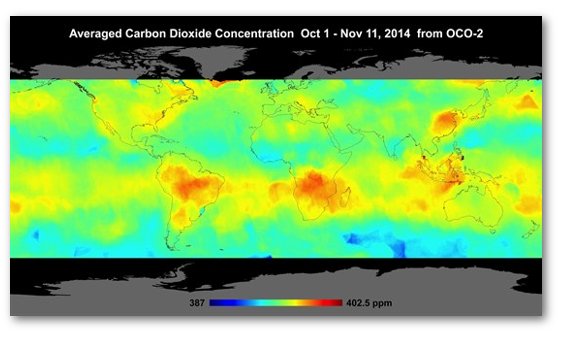Over the years I haven't really devoted much time to the carbon cycle, but I wonder if some of the attention of the climate debate will be switching to this area with the advent of the Orbiting Carbon Observatory, a satellite deployed last year to measure carbon dioxide concentrations across pretty much the whole planet.
The first maps were presented at AGU last month and the data is now publicly available:
 Anthony has an interesting guest post from geophysicist Martin Hovland, which looks at some three hotspots that appear to be associated with subsea volcanic vents. I'm not sure whether these are of sufficient magnitude to provide backing for Ian Plimer's hypothesis about volcanic contributions to the carbon budget, but at least this represents a start in resolving the issues.
Anthony has an interesting guest post from geophysicist Martin Hovland, which looks at some three hotspots that appear to be associated with subsea volcanic vents. I'm not sure whether these are of sufficient magnitude to provide backing for Ian Plimer's hypothesis about volcanic contributions to the carbon budget, but at least this represents a start in resolving the issues.
But the maps raise lots of other interesting questions too, at least for someone like me who is not particularly up to speed in this area. NASA seem to think there are no great surprises. Perhaps readers know some of the answers. For example, the low CO2 concentrations in the UK make no sense to me. And I wonder why India should have such low concentrations when China is so high. Why is there a hotspot in Greenland? And what is that one in the South Atlantic.
So many questions, so little time for reading.